
views
Installing the Brackets

Purchase a set of wall storage brackets. Look at your local hardware store or order a set of wall brackets online. Choose either the spring-loaded variety, or a simpler multi-purpose bracket. For a cheaper alternative, you can purchase 2 plumbing hooks to use as the lower bracket, and 1 screw hook for the upper bracket.

Make sure that the brackets can support the weight of your wheelbarrow. Simple brackets normally have a weight limit for how much they can hold before bending or breaking. Check the packaging or the description online to make sure your wheelbarrow won't fall off of the wall! If your wheelbarrow is made of metal, it will likely be pretty heavy. Try to find the brackets with highest weight limit available.
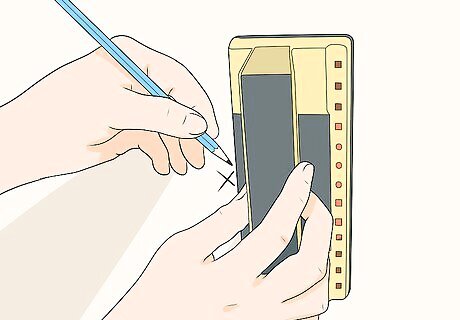
Locate a stud in the wall. Without a stud to anchor the brackets in place, a heavy wheelbarrow might fall off of the wall, causing damage to the drywall and the wheelbarrow. Using an electric stud finder or by knocking on the walls, find a stud to support the brackets and wheelbarrow. Draw a light “X” on the wall where the stud is located to remind yourself where it is. If your garage is made of cinder block or brick, you don't have to worry about locating a stud. You can hang the wheelbarrow in any convenient location.
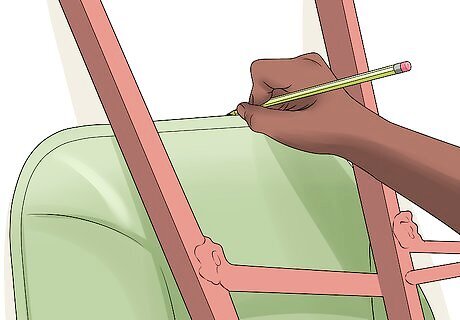
Mark the height of the wheelbarrow tub on the wall. Roll the wheelbarrow to the wall so that the front wheel is aligned with the stud. Then, using a pencil, mark the spot where the upper lip of the tub hits the wall. If you're using plumbing hooks as your bottom bracket, make 2 marks 1.5 inches (3.8 cm) apart on the stud.
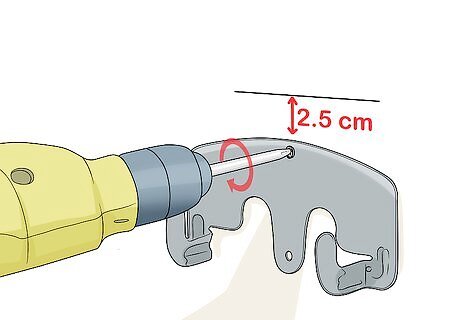
Install the lower bracket 1 in (2.5 cm) below the marked height. Measure 1 inch (2.5 cm) below the marked height, and use the provided screws to install the bracket properly. You'll need to use a drill to ensure that the screws are secured into the wall and that your bracket is safe to use. If you're using plumbing hooks, drill a pilot hole first, and then hand screw the hooks into the pre-drilled holes.
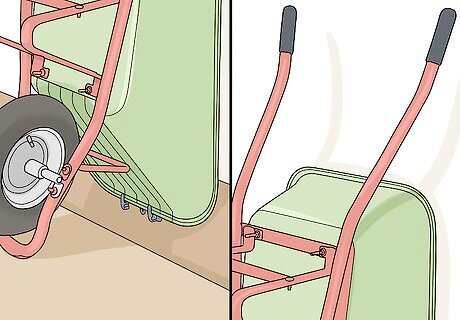
Place the front lip of the tub in the lower bracket and lift the handles. Secure the wheelbarrow in the lower bracket by pushing it against the wall, and then lift the back of the wheelbarrow so that the opening of the tub is flat against the wall. Hold the wheelbarrow by the handles to keep it in place while it rests in the lower bracket. This will allow you to install the top bracket in a spot that fits your wheelbarrow perfectly according to the size of the tub.
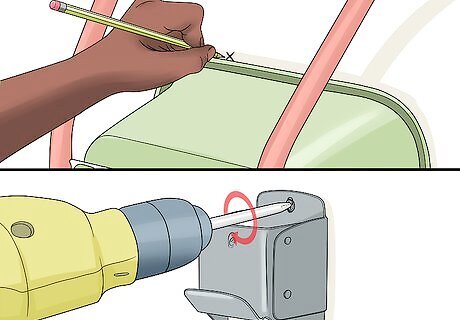
Mark the top point of the tub and install the top bracket on the stud. Make a small “X” at the top of the tub and then remove the wheelbarrow from the brackets. Using the hardware included with the brackets and a drill, hang the top bracket facing down toward the bottom bracket. If you're using a screw hook, be sure to drill a pilot hole at the marked point before screwing the hook in by hand. To hang or remove the wheelbarrow, turn the screw so that it's horizontal.
Hanging Up the Wheelbarrow

Secure the front lip of the tub into the bottom bracket. Position the wheelbarrow so that the front lip is just above the bracket, and then use the handles to lift the back of the wheelbarrow to lower the front lip into the bracket. Keep lifting the handles up until the rim of the tub is almost flush with the wall. If you installed your brackets using your wheelbarrow as a guide, this process should go smoothly. However, if the bracket is too high, you may have to lift the front lip of the wheelbarrow into the bracket.
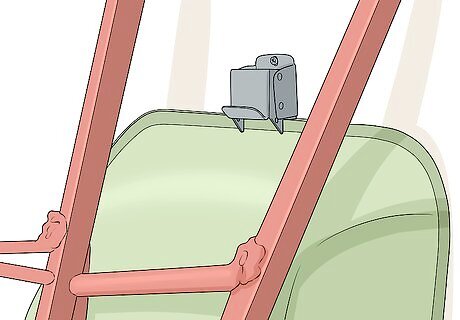
Secure the top of the wheelbarrow in the upper bracket. If you're using a spring-loaded bracket on the top, press the top of the clip to open it while you position the back lip of the tub in the bracket. Then, let go of the clip. If you used screw hooks, turn them to the side before positioning the back lip against the wall, and then twist them into a downward position to hold the wheelbarrow in place. If your wheelbarrow is very heavy, you might need to ask someone to help you. Have them hold the wheelbarrow in place while you secure the top bracket.

Unlatch the top bracket and lower the back of the wheelbarrow to use it. When you need to use the wheelbarrow, hold it by the handles and carefully unlatch the top bracket or screws. Then, use the handles to lower the wheelbarrow until the back legs are resting on the ground. Lift the front lip of the tub off of the lower bracket and lower it so the front wheel is on the ground. Be careful when lowering your wheelbarrow to the ground. The front lip can sometimes move forward and scrape against the wall, so be sure to work slowly.

Wrap towels around the legs of the wheelbarrow to prevent injuries. If your wheelbarrow is hung in a high-traffic area, the legs on the bottom can be hazardous. While it's hanging up, wrap a towel around each leg to soften them and prevent bruises if you bump into a leg accidentally. Remember to remove the towels from the legs before using your wheelbarrow.













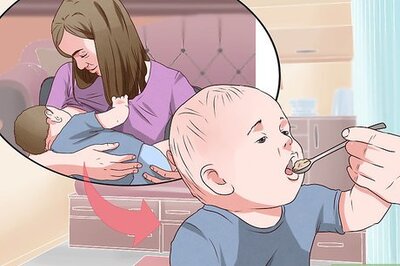





Comments
0 comment